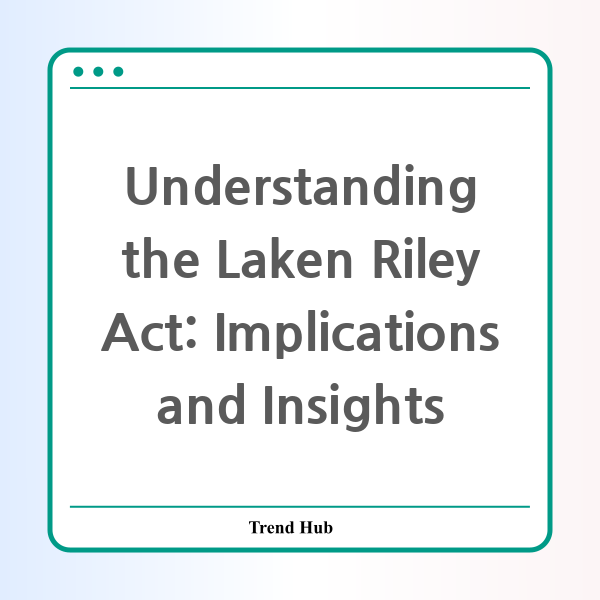* This website participates in the Amazon Affiliate Program and earns from qualifying purchases.

As the political landscape continues to evolve, the recently passed Laken Riley Act has emerged as a focal point in the immigration debate. This legislative measure, which mandates the detention of undocumented migrants charged with specific crimes, represents a significant shift in policy priorities under the Trump administration. But what does this mean for the future of immigration enforcement in the United States?
With a vote tally of 263 to 156 in the House, the Laken Riley Act has passed with notable bipartisan support, a move that may indicate a changing sentiment among Democrats regarding immigration policies. Under this new legislation, the Department of Homeland Security is required to detain undocumented individuals who have been charged with crimes such as theft, assault on law enforcement officers, and even those whose actions resulted in serious injury or death.
Named after a tragic incident involving a young Georgia student, the Laken Riley Act is more than just legislation. It reflects a growing concern among voters and lawmakers alike about the intersection of immigration and crime—a topic that has polarized public opinion and ignited fierce debates across the nation.
Supporters of the Act, many of whom are Republicans, see it as a critical step toward enhancing public safety and addressing the fears of constituents who believe that undocumented immigrants contribute to crime. In contrast, critics argue that the Act could infringe on civil liberties and lead to cases of wrongful detention, further complicating the already sensitive issue of immigration policy.
One of the key provisions of the Laken Riley Act allows state attorneys general to challenge federal decisions regarding the release of individuals from detention, thereby granting states more power in immigration enforcement. This could potentially lead to a patchwork of immigration policies across the country, with varying degrees of strictness depending on state leadership and priorities.
However, the implementation of the Laken Riley Act is fraught with challenges. The Immigration and Customs Enforcement (ICE) agency has indicated that existing resources are inadequate to handle the increased demands of the Act, estimating that it would require an additional 110,000 detention beds to properly execute the legislation. With only 41,500 beds currently funded, the logistical and financial hurdles of this expansion present a daunting task for federal authorities.
Furthermore, while the passage of the Laken Riley Act marks a significant legislative victory for the Trump administration, its efficacy will ultimately depend on the support it garners from state and local officials and the allocation of necessary funding. As lawmakers deliberate on the budget for their agencies, the conversation around immigration enforcement is likely to intensify.
As the U.S. navigates this new chapter in immigration policy, the Laken Riley Act will undoubtedly spark ongoing discussions about the balance between public safety and the protection of civil rights. The implications of this Act go beyond mere policy changes—it challenges the very framework of how immigration is managed in the United States.
In conclusion, the Laken Riley Act serves as a potent reminder of the complexities surrounding immigration reform in America. As we move forward, engaging in informed discussions and advocating for solutions that uphold both safety and rights will be crucial in shaping a more just and effective immigration system.
* This website participates in the Amazon Affiliate Program and earns from qualifying purchases.